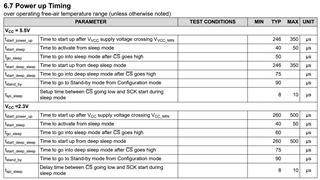Question 1. How much power does the TMAG5170 device use when transitioning from one operating mode to another?
For example,
-> transitioning from Configuration mode to Active Conversion mode takes approximately 125uS
-> does the device use Configuration mode levels of power during this 125uS?
-> does the device use Active Conversion mode levels of power during this 125uS?
Question 2: Also, does it take another 125uS for the chip to transition from Active mode to configuration mode? Or how long does it take to transition from Active mode to one of the other modes?
Question 3: Can the TMAG settings registers be modified in Active and Standby mode, or only in configuration mode?
Question 4: How long do diagnostics take to run, when enabled? How much time is added to tmeasure?
Question 5: What is the meaning of the different diagnostic mode runs?
-> What does "run data path diagnostics all together" mean?
-> What does "Run only enabled data path diagnostics all together mean? I thought the enabled diagnostics can simply be enabled / disabled all together, not individually?
-> What does "Run all data path diagnostics in sequence" mean? Significance of all together vs in sequence? Time delay of all together vs in sequence?
-> What does "Run only enabled data path diagnostics in sequence" mean? I thought the enabled diagnostics can simply be enabled / disabled all together, not individually?







